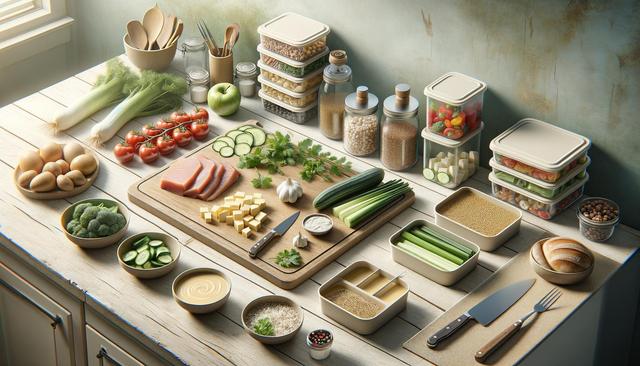Start with a Plan
One of the most important steps in meal prep is planning. Before heading to the store or diving into cooking, take a few minutes to map out your meals for the week. Think about your schedule and decide which meals you want to prepare in advance. This helps reduce food waste and ensures you have everything you need on hand. Start by selecting a few core recipes that you enjoy and are confident making. Then, create a shopping list based on those meals.
Planning ahead also allows you to balance your meals with a variety of food groups. A simple way to do this is by choosing:
- One protein source (chicken, tofu, beans)
- One vegetable per meal (broccoli, spinach, carrots)
- A healthy grain or starch (brown rice, quinoa, sweet potatoes)
Keeping it simple at the beginning will prevent overwhelm and help you stick to a consistent routine.
Invest in the Right Containers
Proper storage is essential when it comes to meal prep. Investing in a set of reusable containers makes organizing and storing your meals much more efficient. Look for containers that are dishwasher, microwave, and freezer safe. Divided containers are particularly helpful for keeping ingredients separate until you’re ready to eat.
Having a variety of container sizes can also help with portion control and storage space. Consider these types of containers:
- Single compartment for one-dish meals
- Two or three compartments for separating sides
- Mason jars for salads or overnight oats
Labeling your containers with the meal name and date can also help you stay organized and ensure food is consumed while still fresh.
Batch Cook Smartly
Batch cooking is a time-saving technique that involves preparing large quantities of food at once. This approach is especially useful for staples like rice, beans, pasta, or roasted vegetables that can be used in multiple meals. Cook once and use the ingredients in different ways throughout the week to keep meals varied and interesting.
To make the most out of batch cooking:
- Choose recipes that freeze well
- Cook proteins and grains separately for flexibility
- Use spices and sauces to vary flavor profiles
Batch cooking reduces the daily time spent in the kitchen and ensures that you always have a meal ready when you need it.
Prep Ingredients, Not Just Meals
If cooking full meals in advance feels too much at first, start by prepping ingredients. Washing, chopping, and portioning vegetables or marinating proteins can save significant time during the week. This method still allows for flexibility in meals while cutting down daily prep time.
Ingredient prepping ideas include:
- Pre-washing greens and storing them in airtight containers
- Chopping onions, peppers, or cucumbers for quick access
- Boiling eggs or cooking grains for quick meal assembly
This approach is especially helpful if you prefer freshly cooked meals but want to cut down the prep work needed each day.
Keep It Flexible and Fun
Meal prep doesn’t need to be rigid. In fact, allowing for some flexibility can help you stay consistent without feeling restricted. Leave room in your plan for spontaneous meals or eating out. Consider prepping only for weekdays or just for lunches if that feels more manageable at first.
To keep things enjoyable:
- Rotate recipes weekly to avoid boredom
- Try new ingredients or cuisines from time to time
- Involve family or friends in prepping sessions
Staying flexible helps you adapt the meal prep process to your lifestyle rather than forcing a strict routine that might not last.
Conclusion
For beginners, meal prep can seem like a big task, but starting small and building habits over time can make it both manageable and rewarding. Planning ahead, investing in good containers, batch cooking, prepping ingredients, and keeping it flexible are all practical steps to set yourself up for success. Whether you’re looking to save time, eat healthier, or reduce food waste, these tips offer a strong foundation for building a meal prep routine that works for you.






